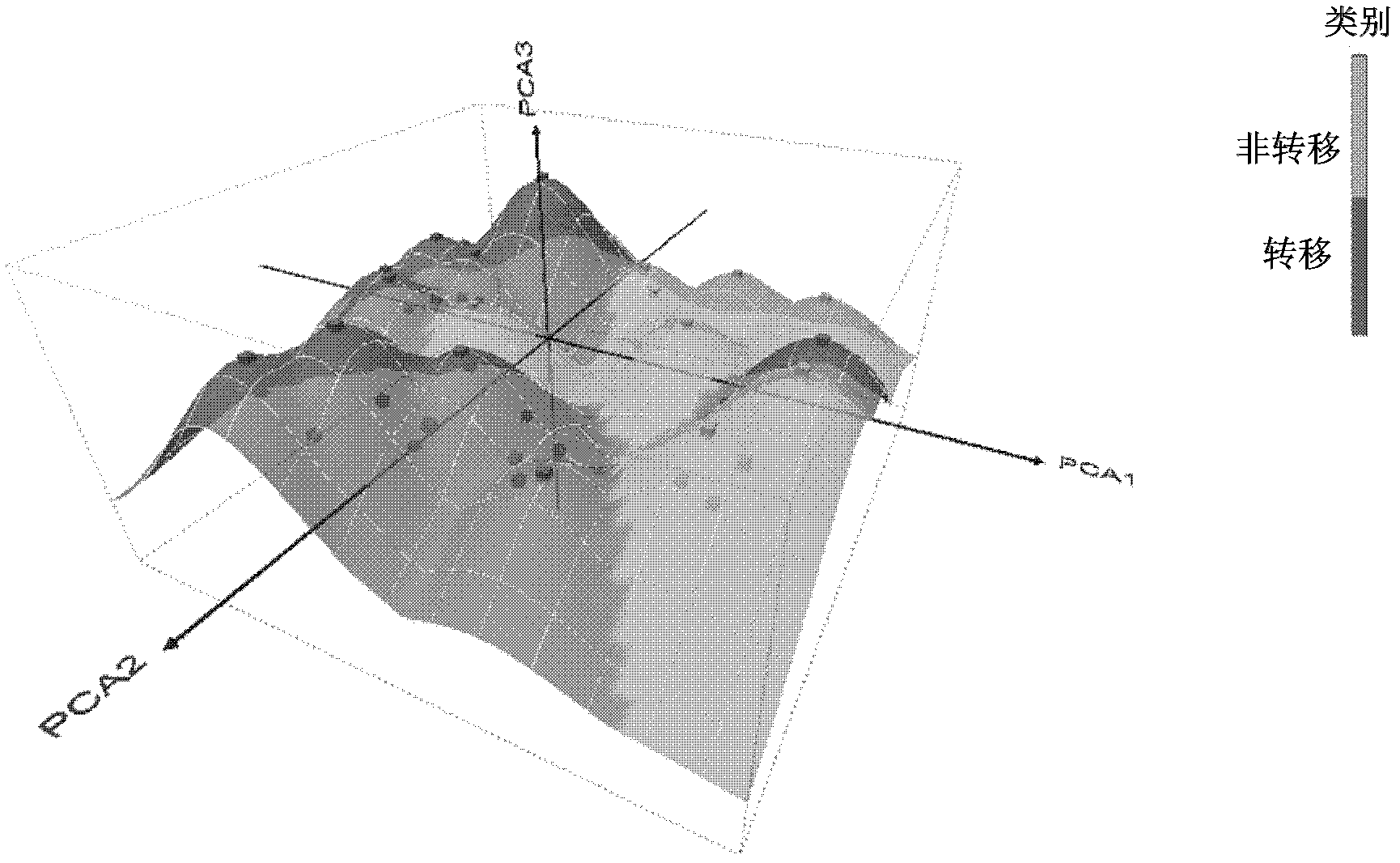MicroRNA markers for discriminating metastatic and non-metastatic squamous cell lung carcinoma
A sequence and forward technology, applied in the direction of DNA / RNA fragments, recombinant DNA technology, the use of vectors to introduce foreign genetic material, etc., can solve problems such as the effect that cannot be underestimated
- Summary
- Abstract
- Description
- Claims
- Application Information
AI Technical Summary
Problems solved by technology
Method used
Image
Examples
preparation example Construction
[0075] The preparation of the miRNA chip can adopt conventional manufacturing methods of biochips known in the art. For example, if the solid phase carrier is a modified glass slide or silicon wafer, and the 5' end of the probe contains amino-modified poly dT strings, the oligonucleotide probe can be formulated into a solution, and then spotted with a spotting instrument. The miRNA chip of the present invention can be obtained by arranging in a predetermined sequence or array on a modified glass slide or a silicon chip, and then fixing it by standing overnight. If the nucleic acid does not contain amino modification, its preparation method can also refer to: "Gene Diagnosis Technology-Non-radioactive Operation Manual" edited by Wang Shenwu; J.L.erisi, V.R.Iyer, P.O.BROWN. Exploring the metabolic and genetic control of gene expression on a genomic scale. Science, 1997; 278: 680 and Ma Liren, edited by Jiang Zhonghua. Biochip. Beijing: Chemical Industry Press, 2000, 1-130.
[0...
Embodiment 1
[0094] The preparation of embodiment 1RNA sample
[0095] 1. Tissue samples:
[0096] 46 pairs of metastatic and non-metastatic samples (21 metastatic, 25 non-metastatic) were obtained from surgical resection specimens of lung squamous cell carcinoma patients, and these specimens were obtained from Shanghai Chest Hospital. All the above-mentioned specimens were obtained with the approval of the ethics committee of the WHO partner organization authorized by the Shanghai Municipal Government. The clinical data of tissue samples include: gender, age, tumor size, pathological grade (TNM stage), metastasis or not, etc.
[0097] 2. Gene chip:
[0098] microRNA expression profiling chip, using the crystal core of Boao Biotechnology Co., Ltd. Expression profiling chip (single-channel chip).
[0099] 3. Extraction of total tissue RNA
[0100] 3.1 Collection and storage of samples: The isolated tissues were cut into small pieces and immediately frozen in liquid nitrogen, and then ...
Embodiment 2
[0104] Extraction and labeling of embodiment 2microRNA
[0105] The miRNAs were extracted with Ambion's miRNAs extraction kit, and the specific operations were performed according to the corresponding instructions. Samples were labeled with T4 RNA ligase according to Thomson's method. In short, here's how:
[0106] 1.4 μg miRNA and 500ng 5′-phosphate-cytosine-uracil-cy3-3′ (Dharmacon, Chicago, USA) and 2 units of T4 RNA ligase (NEB, Ipswich, USA) were incubated at 4°C for 2 hours. miRNAs are labeled. An equal amount of corresponding negative control was set up for each miRNA sample.
[0107] 2. The labeled RNA was precipitated with 0.3M sodium acetate and 2.5 volumes of ethanol, and then resuspended with 15 μl of hybridization solution containing 3×SSC, 0.2% SDS and 15% formamide. All hybridizations were repeated twice, and the hybridization was performed with LifterSlip TM (Erie, PAUSA) to ensure that the hybridization solution flows evenly between the chip and the covers...
PUM
 Login to View More
Login to View More Abstract
Description
Claims
Application Information
 Login to View More
Login to View More - R&D
- Intellectual Property
- Life Sciences
- Materials
- Tech Scout
- Unparalleled Data Quality
- Higher Quality Content
- 60% Fewer Hallucinations
Browse by: Latest US Patents, China's latest patents, Technical Efficacy Thesaurus, Application Domain, Technology Topic, Popular Technical Reports.
© 2025 PatSnap. All rights reserved.Legal|Privacy policy|Modern Slavery Act Transparency Statement|Sitemap|About US| Contact US: help@patsnap.com



